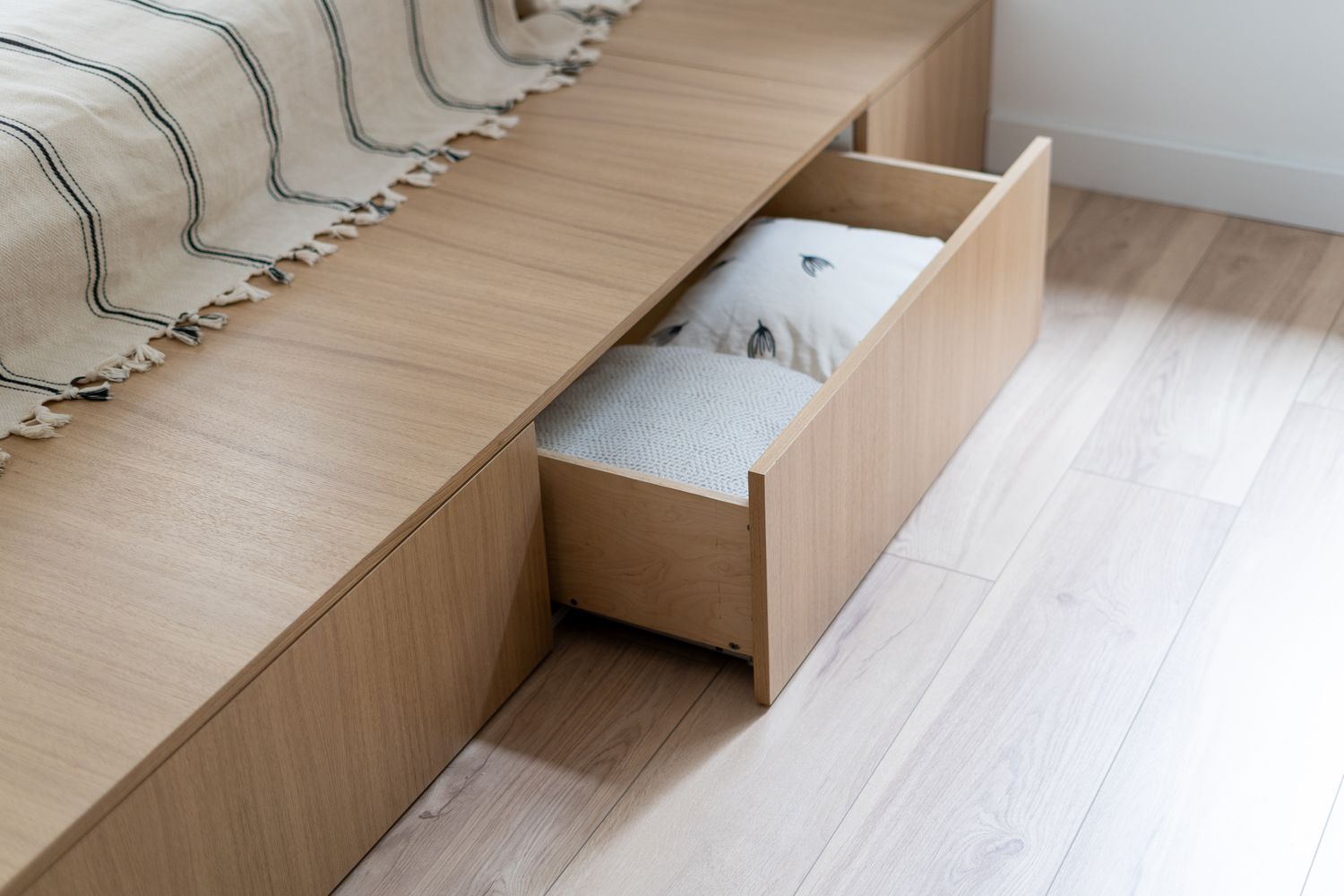

Articles
How To Store Comforter
Modified: January 19, 2024
Learn how to properly store comforters and keep them fresh and protected with our informative articles on storage tips and techniques.
(Many of the links in this article redirect to a specific reviewed product. Your purchase of these products through affiliate links helps to generate commission for Storables.com, at no extra cost. Learn more)
Introduction
Having a comfortable and warm comforter can make all the difference in getting a good night’s sleep. However, when the seasons change and it’s time to switch to a lighter blanket, you may find yourself wondering how to properly store your comforter to keep it in good condition for the next use. Effective storage of your comforter is essential to keep it clean, protected, and ready to use when you need it again.
In this article, we will guide you through the step-by-step process of storing your comforter properly. From choosing the right storage container to cleaning and folding the comforter, we will provide you with all the necessary tips and tricks to ensure that your comforter stays in excellent condition during its time in storage.
So, let’s dive in and learn how to store your comforter like a pro!
Key Takeaways:
- Properly storing your comforter is crucial for maintaining its quality and longevity. Choose the right storage container, clean it thoroughly, and add protection to keep it in excellent condition.
- Store your comforter in a cool, dry place away from direct sunlight and periodically check on it to ensure its condition. Following these steps will help maintain the comfort and quality of your comforter for years to come.
Read more: How To Store A Comforter
Step 1: Choose the Right Storage Container
The first step in properly storing your comforter is to choose the right storage container. It’s crucial to select a container that provides adequate protection from dust, moisture, and pests while allowing the comforter to breathe. Here are a few options to consider:
- Vacuum-Sealed Bags: Vacuum-sealed bags are an excellent choice for storing comforters. These airtight bags help reduce the size of the comforter, making it easier to store in tight spaces. Additionally, they provide protection against dust, dirt, and moisture.
- Storage Bins: Plastic storage bins with tight-fitting lids are another suitable option for comforter storage. Choose a bin that is large enough to accommodate your comforter without squashing or folding it too much.
- Canvas Bags: Canvas storage bags are a breathable option that allows air circulation while keeping dust and pests at bay. Look for bags made from durable and tear-resistant materials.
Whatever storage container you choose, make sure it is clean and dry before you put your comforter inside. This will help prevent any mold or mildew growth during storage. Avoid using cardboard boxes as they are susceptible to moisture and pests.
Once you have selected the appropriate storage container, you are ready to move on to the next step: cleaning your comforter.
Step 2: Clean the Comforter
Before storing your comforter, it is essential to clean it properly. This step ensures that any dirt, dust, or stains are removed, preventing them from setting in during storage and potentially causing long-term damage. Follow these cleaning tips to prepare your comforter for storage:
- Check the Care Label: Start by checking the care label on your comforter for any specific instructions on how to clean it. Different comforters have different cleaning requirements, so it’s essential to follow the manufacturer’s recommendations.
- Spot-Clean Stains: If your comforter has any stains, spot-clean them before washing the entire comforter. Use a gentle detergent and a soft cloth or sponge to dab the stained area. Avoid rubbing or scrubbing as it may spread the stain or damage the fabric.
- Wash in a Front-Loading Machine: If your comforter is machine-washable, use a front-loading washing machine, as it is less likely to agitate or damage the comforter. Use a mild detergent and wash on a gentle cycle with cool water.
- Dry Thoroughly: After washing, ensure that your comforter is thoroughly dried. You can air-dry it outdoors on a sunny day or use a large-capacity dryer on a low heat setting. Add a few clean tennis balls or dryer balls to help fluff the comforter.
Once your comforter is clean and dry, you are ready to move on to the next step: folding it properly for storage.
Step 3: Fold the Comforter Properly
Properly folding your comforter is crucial to avoid wrinkles, creases, and unnecessary bulk during storage. Follow these steps to fold your comforter correctly:
- Spread it Out: Lay your comforter flat on a clean and spacious surface, such as a bed or a large table. Smooth out any wrinkles or folds to ensure an even distribution.
- Fold in Half: Fold your comforter in half lengthwise, matching the top edge with the bottom edge. This will create a long rectangle shape.
- Fold in Thirds: Fold the comforter in thirds from left to right or right to left, depending on your preference. This will result in a more manageable size for storage.
- Roll or Fold: Decide whether you want to roll or fold your comforter for storage, depending on the available space in your chosen storage container. Rolling can help minimize creases, while folding can help maximize space.
- Secure with Straps: If using a storage bag or bin, you may consider securing the folded comforter with straps or bungee cords to keep it compact and prevent it from unfolding during storage.
Remember to avoid folding or compressing the comforter too tightly, as this can cause unnecessary stress on the fabric and filling. Additionally, be mindful of any special features, such as decorative borders or trim, and fold or roll them carefully to prevent damage.
With the comforter properly folded, you can now move on to the next step: adding protection.
Store your comforter in a breathable cotton storage bag to prevent moisture buildup and mildew. Avoid plastic bags, which can trap moisture.
Step 4: Add Protection
Adding protection to your comforter is essential to safeguard it from dust, dirt, and potential damage while in storage. Here are some effective ways to protect your comforter:
- Cover with a Cotton or Cotton Blend Sheet: Before placing your comforter in the storage container, cover it with a clean cotton or cotton-blend sheet. This will provide an extra layer of protection against dust and keep the comforter’s fabric breathable.
- Use Acid-Free Tissue Paper: For extra delicate or heirloom comforters, consider wrapping them in acid-free tissue paper. This type of tissue paper is pH neutral and prevents any potential chemical reaction with the fabric over time.
- Add Mothballs or Cedar Chips: If you’re concerned about pests or moths damaging your comforter, you can add mothballs or cedar chips to the storage container. These natural deterrents help keep pests away without causing any harm to the comforter.
- Avoid Plastic Bags: While it may be tempting to store your comforter in a plastic bag for protection, it’s best to avoid it. Plastic bags can trap moisture and potentially lead to mold or mildew growth. Opt for breathable storage options instead.
By adding these protective measures, you can ensure that your comforter stays clean, fresh, and damage-free while in storage.
Now that your comforter is adequately protected, let’s move on to step 5: storing it in a suitable environment.
Read more: How To Store Extra Comforters
Step 5: Store in a Cool, Dry Place
Choosing the right storage location for your comforter is crucial to maintain its quality and longevity. Here are some key considerations for storing your comforter:
- Find a Cool Environment: It is important to store your comforter in a cool area to prevent heat damage and excessive moisture. Avoid storing it in places like attics, basements, or garages, as these areas can be prone to temperature fluctuations.
- Avoid Direct Sunlight: Sunlight can fade and damage the fabric of your comforter over time. Choose a storage location away from direct sunlight, such as a closet or under the bed.
- Maintain a Dry Environment: Moisture can lead to mold, mildew, and unpleasant odors in your comforter. Ensure that the storage area is dry to prevent any moisture accumulation. Consider using a dehumidifier if necessary.
- Avoid Contact with Flooring: When storing your comforter, avoid placing it directly on the floor. Instead, use a shelf, a storage rack, or place it on top of boxes to keep it elevated and away from potential floor moisture and dust.
- Keep Away from Household Chemicals: Avoid storing your comforter near any household chemicals, such as cleaning supplies or pesticides. These substances can emit fumes that may be harmful to the fabric.
By following these guidelines, you can ensure that your comforter remains in a safe and suitable environment throughout its storage period.
Next, let’s discuss step 6: periodically checking on your comforter.
Step 6: Check on Your Comforter Periodically
Even though your comforter is safely stored, it’s important to periodically check on it to ensure its condition and make any necessary adjustments. Here are some tips for doing so:
- Regular Inspections: Set a reminder to inspect your stored comforter every few months. Look for any signs of damage, pests, or moisture. This will allow you to address any issues promptly and prevent them from becoming worse.
- Air it Out: If possible, take out your comforter and air it out for a few hours. This will help freshen it up and keep it feeling and smelling clean.
- Check for Pests: Look for any signs of pests, such as droppings or insects. If you notice any infestation, take necessary steps to eliminate the pests and protect your comforter from further damage.
- Re-fold or Re-position: During the inspection, you might find that the comforter has shifted or unfolded. Take the opportunity to re-fold or re-position it to ensure it remains properly stored.
By periodically checking on your comforter, you can address any potential issues promptly and take the necessary steps to maintain its quality while in storage.
Now that you have learned all the steps to properly store your comforter, let’s summarize the main points.
Conclusion
Properly storing your comforter is essential to ensure its longevity, cleanliness, and overall quality. By following the steps outlined in this article, you can confidently store your comforter and have it ready for use whenever you need it again. Let’s summarize the key points:
- Choose the Right Storage Container: Select a container that provides protection from dust and moisture while allowing the comforter to breathe.
- Clean the Comforter: Follow the care instructions and thoroughly clean your comforter before storing it to prevent dirt and stains from setting in.
- Fold the Comforter Properly: Take care to fold your comforter in a way that minimizes wrinkles, creases, and unnecessary bulk.
- Add Protection: Cover your comforter with a cotton sheet, use acid-free tissue paper for delicate comforters, and consider adding natural deterrents such as mothballs or cedar chips.
- Store in a Cool, Dry Place: Choose a storage location away from direct sunlight, moisture, and extreme temperatures.
- Check on Your Comforter Periodically: Regularly inspect your stored comforter for damage, pests, and any necessary adjustments.
By following these steps, you can ensure that your comforter remains clean, protected, and in excellent condition during its time in storage. Whether you’re storing it during the warmer months or for an extended period, proper storage will help maintain the comfort and quality of your comforter for years to come.
Now, it’s time to gather the necessary supplies, clean your comforter, and store it with confidence. Rest assured that when the time comes to use it again, you’ll have a fresh and cozy comforter waiting for you!
Frequently Asked Questions about How To Store Comforter
Was this page helpful?
At Storables.com, we guarantee accurate and reliable information. Our content, validated by Expert Board Contributors, is crafted following stringent Editorial Policies. We're committed to providing you with well-researched, expert-backed insights for all your informational needs.
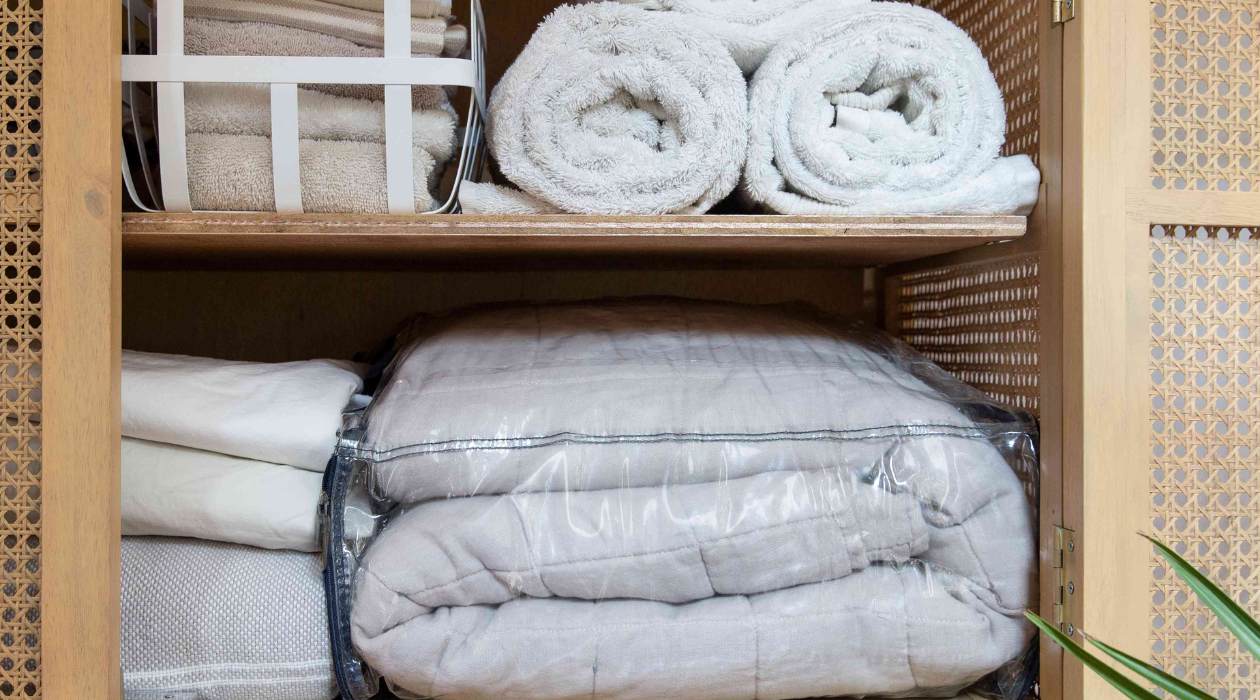
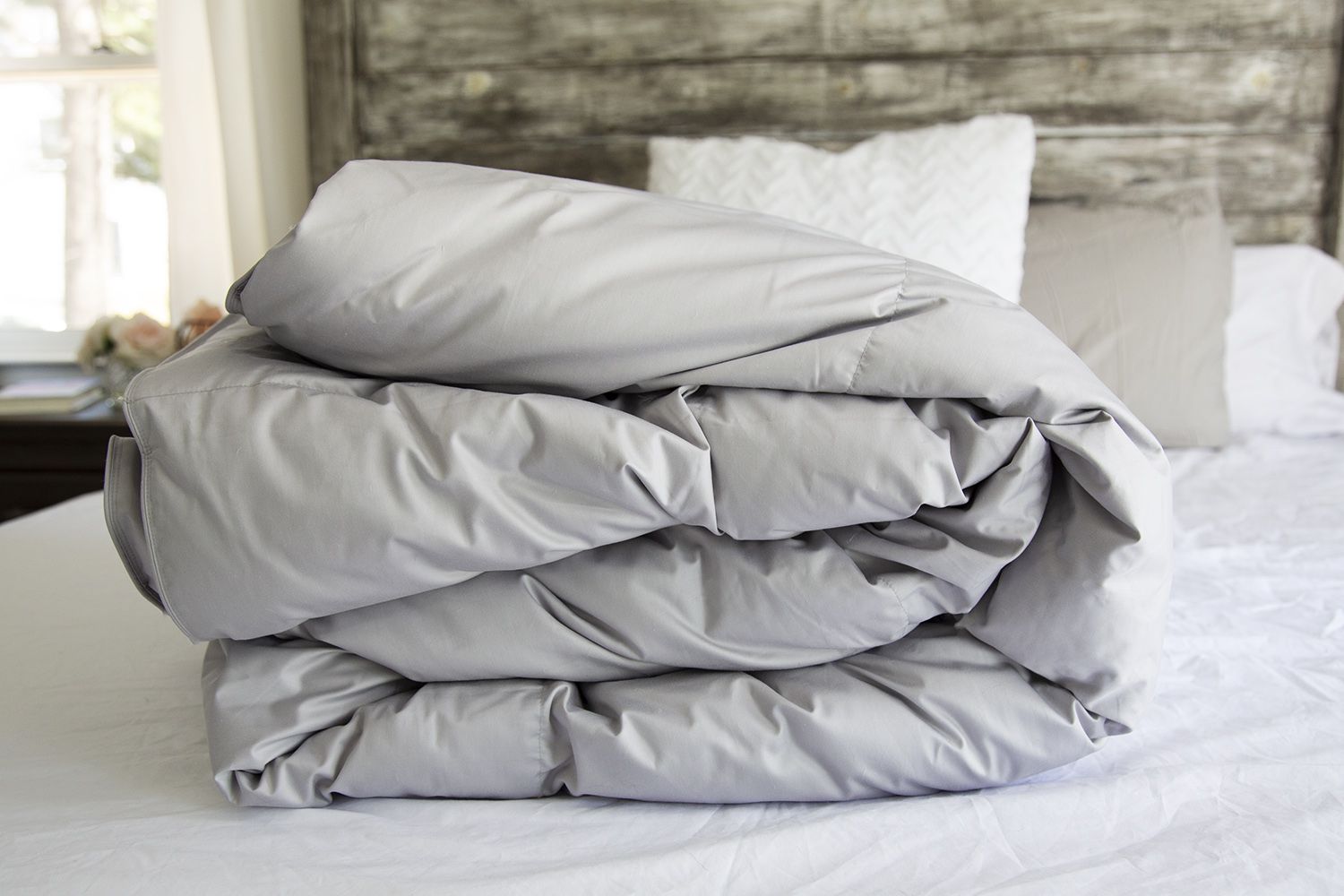
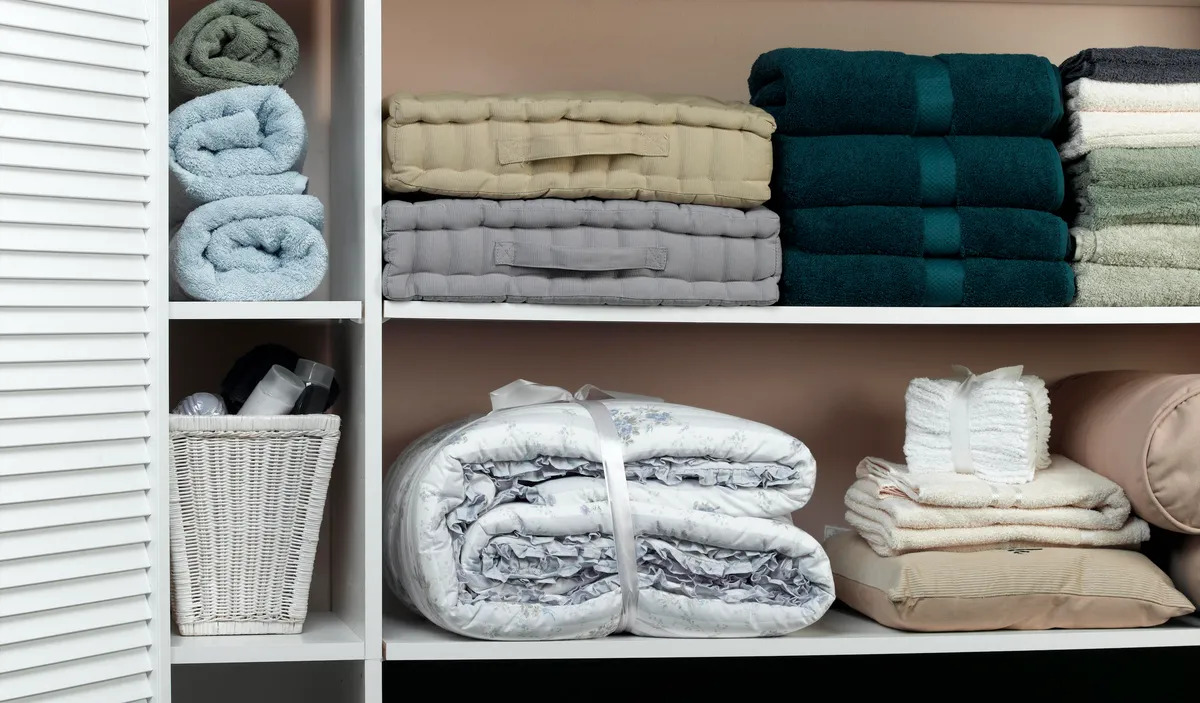

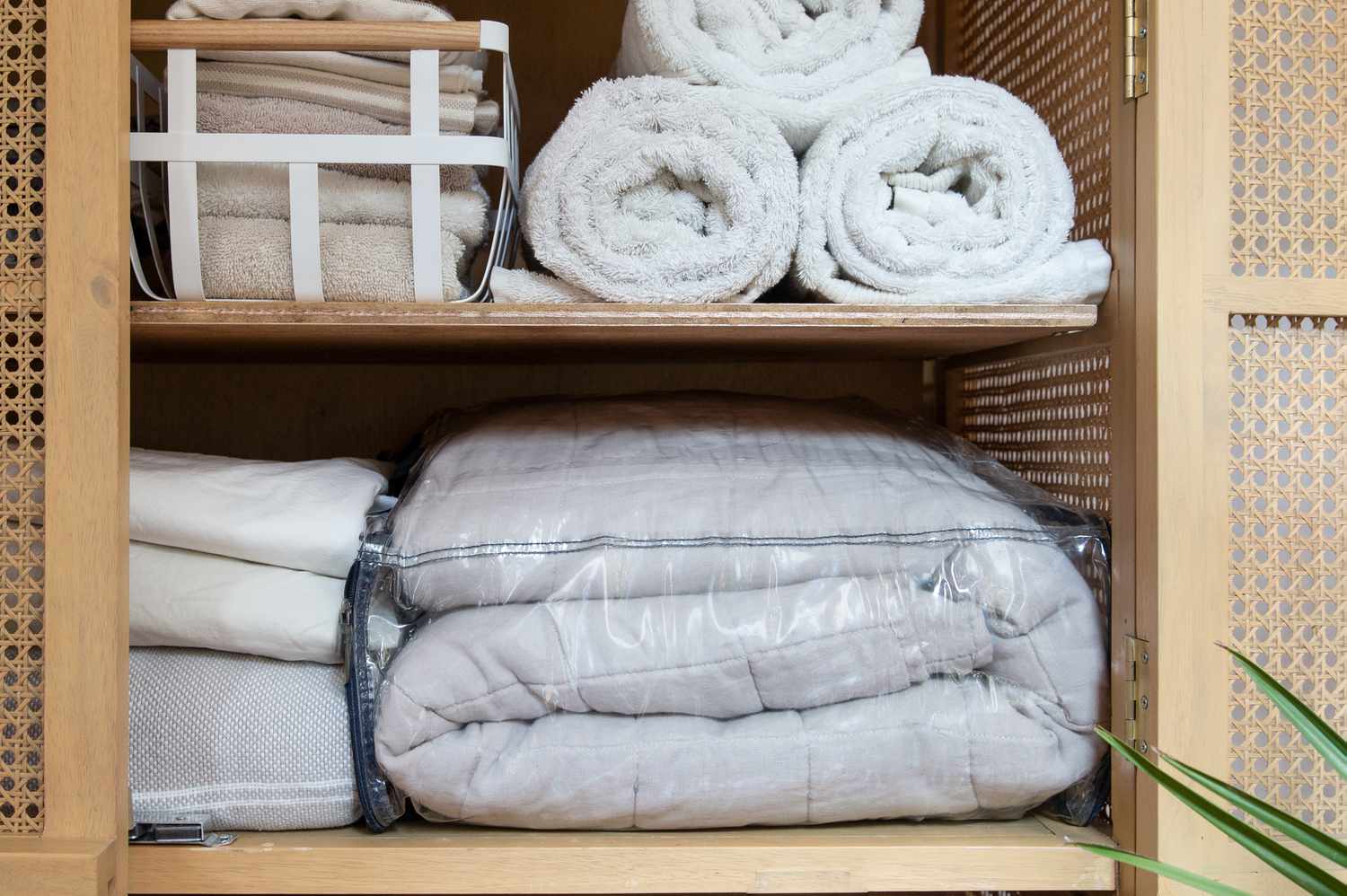










0 thoughts on “How To Store Comforter”